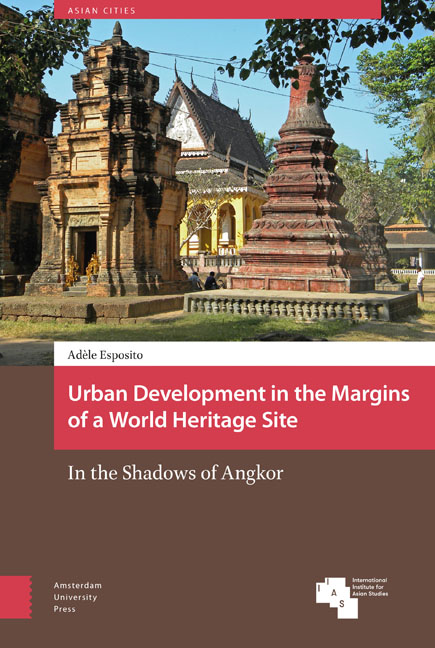Book contents
- Frontmatter
- Dedication
- Contents
- List of Figures
- Abbreviations
- Glossary of Khmer terms
- Acknowledgements
- Author’s Preface
- Introduction
- 1 ‘Before you Build a Wall, Think of What You are Leaving Outside it’: The Construction of Core and Marginal Spaces in the Angkor Region
- 2 The Arena of Urban Planning and the Idea of the City
- 3 The City as Developers’ Playground
- 4 The Architectural Space: How Contemporary Design Shapes Urban Identities and Ideas of Modernity
- Conclusion
- Bibliography
- Index
- Publications / Asian Cities
3 - The City as Developers’ Playground
Published online by Cambridge University Press: 16 February 2021
- Frontmatter
- Dedication
- Contents
- List of Figures
- Abbreviations
- Glossary of Khmer terms
- Acknowledgements
- Author’s Preface
- Introduction
- 1 ‘Before you Build a Wall, Think of What You are Leaving Outside it’: The Construction of Core and Marginal Spaces in the Angkor Region
- 2 The Arena of Urban Planning and the Idea of the City
- 3 The City as Developers’ Playground
- 4 The Architectural Space: How Contemporary Design Shapes Urban Identities and Ideas of Modernity
- Conclusion
- Bibliography
- Index
- Publications / Asian Cities
Summary
A young Khmer man opened the door of the concrete villa surrounded by lush vegetation. I entered the hall together with another doctoral student who was accompanying me. The interior was dark and smelled of old cigarettes. He indicated the office with polite gestures, and we walked in. The ceiling was low and the desks covered with messy paper folders, old computers, and empty beer cans. The South Korean developer was sitting in front of a computer screen, smoking. My objective for the interview was to get some insight into developers’ tactics in Siem Reap, and in particular those of the South Koreans, who were one of the most powerful groups in the Cambodian property sector. My colleague and I took a seat in front of him. I began to ask the series of questions I had prepared about the projects that the construction team was developing in the town. We were shown a drawing representing five identical shophouses on a white page, surrounded by nothing more than a grey line indicating the level of the ground. However, this block of houses was not to be built on empty land, but would replace a series of one-storey wooden shop houses close to Wat Damnak, a pagoda in the southern area of Siem Reap. The shophouses were to be located at the roundabout between the north-south road along the river and the bridge, which leads to the old market area. Shophouses made with industrialized materials are cheap to build. In a climate of property speculation, they provide rapid returns on investment as they are easy to sell or rent out. Out of a sample of 349 requests for building permits in the period 2000-2009, 80 were for the construction of shophouses. Neither the urban environment, nor architectural design were important to the developers, as they had found a successful formula to make money.
Siem Reap's urban landscape has rapidly changed with the proliferation of these shophouse projects. Naturally, I disliked their uniformity and the fact that they erased many examples of vernacular architecture. However, during this interview, I tried not to overtly show my feelings, because informants are generally very sensitive to judgements.
- Type
- Chapter
- Information
- Urban Development in the Margins of a World Heritage SiteIn the Shadows of Angkor, pp. 155 - 234Publisher: Amsterdam University PressPrint publication year: 2018



